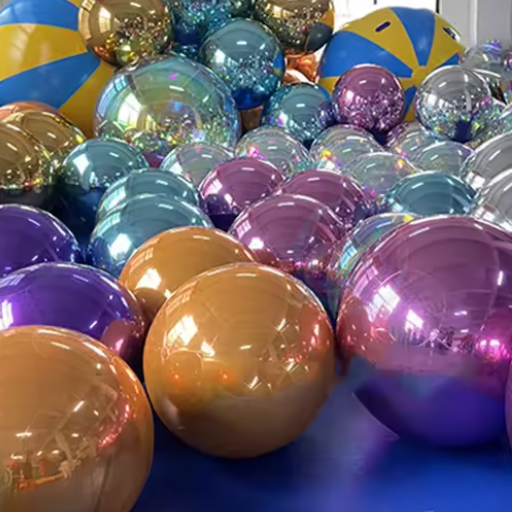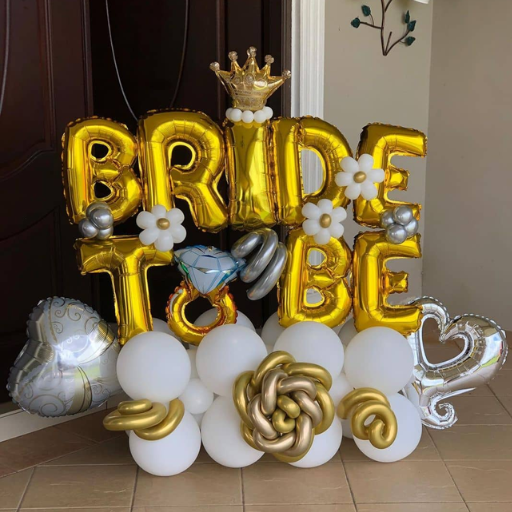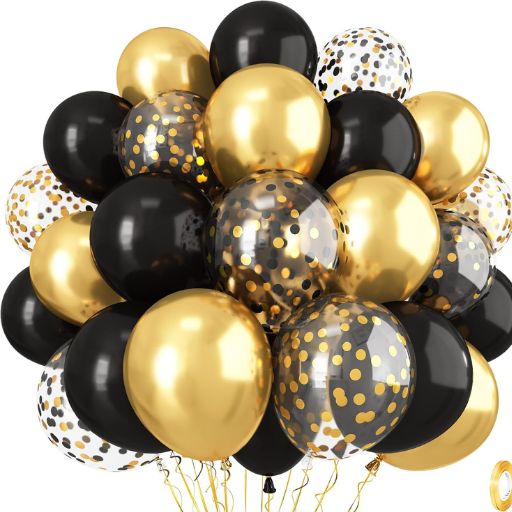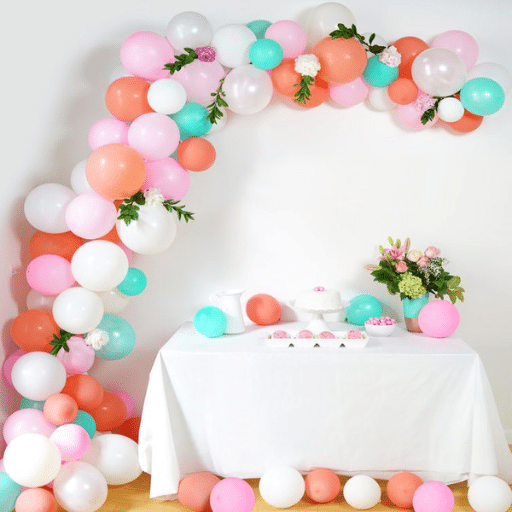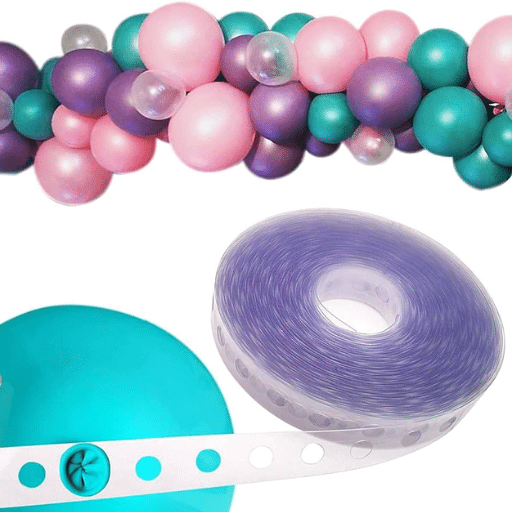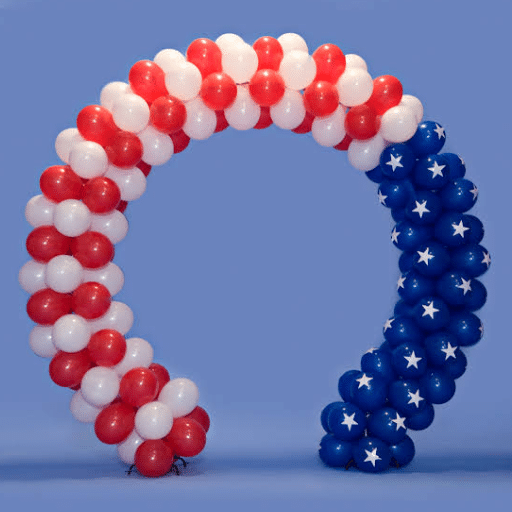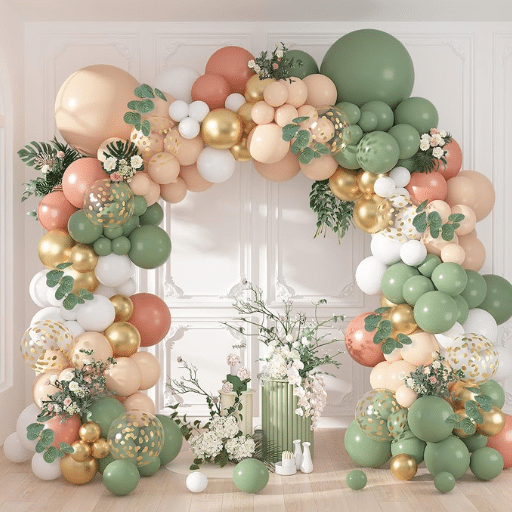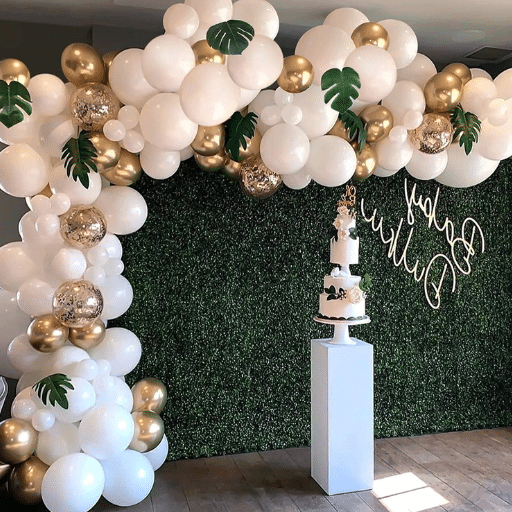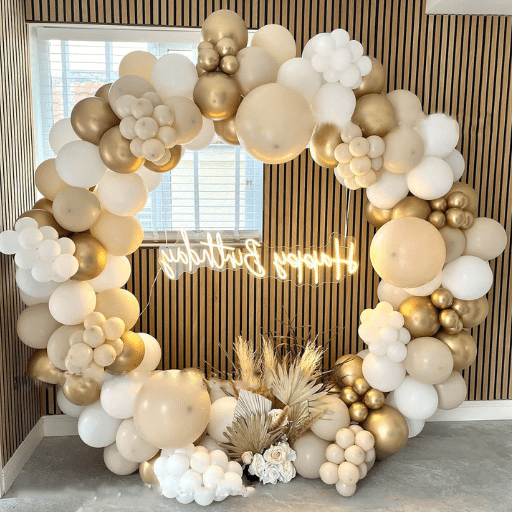Balloons have been an integral part of parties through the ages, imparting color, happiness, and inspiration to an event. Balloon décor, especially a gorgeous balloon garland, can, of course, elevate any event, from birthdays and weddings to baby showers and the like. However, without a proper instructional guide, it may seem like creating those professional decorations is too challenging. This is where our guide comes in! From choosing the right balloon to assembling and styling your garlands, we will guide you in creating some fabulous designs. By then, you will be able to transform simple balloons into jaw-dropping decorations that will wow your guests.
Understanding the Basics of Balloons
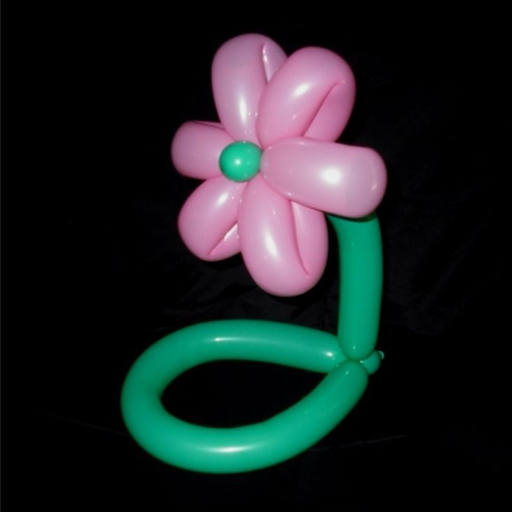
Used to adorn and beautify, balloons are remarkably versatile in their applications. Latex balloons, being environmentally friendly, come in an assortment of sizes and colors and are suitable for almost any occasion. Foil ones are produced by coating fragile sheets of plastic with metalizing agents on one side, providing a reflective finish and allowing helium to be retained for a longer time. To achieve the desired look, one must inflate the balloon correctly with either air or helium. Knowing how a balloon is made and how it is used will allow you to choose accordingly for your decorating needs.
Types of Balloons: Latex, Mylar, and Fabric
|
Type |
Material |
Durability |
Appearance |
Uses |
Inflation |
Eco-Friendliness |
|---|---|---|---|---|---|---|
|
Latex |
Natural rubber |
Short (hours to days) |
Vibrant, various finishes |
Parties, arches, bouquets |
Helium or air |
Biodegradable |
|
Mylar |
Polyester film (foil-coated) |
Long (days to weeks) |
Shiny, reflective |
Custom shapes, messages, themes |
Retains helium well |
Non-biodegradable |
|
Fabric |
Cloth (e.g., nylon, cotton) |
Very long (reusable) |
Soft, textured |
Reusable decor, special events |
Air only |
Highly eco-friendly |
Tools and Materials Needed for Making Balloons
The art of expert balloon decoration calls for a wide range of tools and materials that need to be checked for precision during work and for the durability of the final product itself. Here is the complete list of the materials you will need:
- Balloon Air Pumps
- Manual Air Pumps: Ideal for small projects; they are lightweight and easy to carry.
- Electric Inflators: They are suitable for significant events, as they inflate hundreds of balloons in minutes, thereby saving time and effort. Some models can inflate 500 balloons every hour.
- Helium Tank
- One should use a certified helium tank when filling balloons to ensure they float. Portable helium tanks are ideal for personal use, while a large tank is best suited for professional decorators.
- Tip: Helium tanks must be stored in a dry and cool area, as extreme temperatures can impair their performance.
- Balloon Tying Tools
- Balloon-tying tools save your fingers from fatigue when tying many balloons. They are inexpensive and easy to work with and should be present in any high-volume balloon project.
- Balloon Sticks and Cups
- Best for creating a handheld balloon display without the need for helium. The cups keep balloons securely in place and ready to carry or display.
- Balloon Clips and Sealing Tools
- These clips seal the balloon more quickly than knotting it. Heat sealing machines seal Mylar or foil balloons to maintain air for longer.
- Balloon Weights
- These weights keep helium balloons from floating away. They are decorated with various designs to enhance the appeal of balloon arrangements.
- Ribbon and String
- Tie in style with ribbons that are great for finishing any balloon bouquet or arch. Use curling ribbon for extra fun.
- Adhesive Dots and Glue
- Adhesive dot: Use to stick balloons together discreetly when building garlands, arches, or sculptures. Balloon glue provides a strong bond while being harmless to various materials.
- Balloon Frames and Poles
- Used for large arches, columns, or complex designs, these frames offer support and structure. Customizable designs are available to suit any theme or arrangement.
- Confetti and Inserts
- Confetti or small inserts can be placed inside transparent balloons for an extra wow factor on decorative balloons. Ensure that you use lightweight materials so that the balloons can still float when filled with helium.
- Measuring Tools
- Consistency is key to a professional balloon decoration. Using a balloon sizer or templating tool ensures the uniform size of balloons, which is most necessary for a pleasing design.
Latest Data on Costs and Trends
- 2023 helium costs in the U.S.: Portable helium tanks for sale on the market range from $40 to $70, depending on size and company. Bulk helium tanks for event applications commonly cost $200 or more.
- Prevalence of Electric Inflators: A trend in the balloon industry over the last year has seen a 35% rise in sales of electric balloon pumps, primarily due to their efficiency and low entry price of $20–$50 for basic models.
- Eco-Friendly Products: The demand for biodegradable latex balloons has increased by 20%, underscoring a shift in consumer preference toward eco-friendly products.
With the above tools and materials, as well as the latest online insights, you will be able to create fabulous decorations for all occasions. Be sure to source quality products that allow you to work like a pro and achieve lasting results.
Safety Tips When Working with Balloons
Balloons can bring beauty and joy to any occasion, so safety must always come first. Here are some detailed safety tips integrated with recent observations:
- Avoid Overinflating: Overinflation could cause an unforeseen explosion, leading to injury. Always use a balloon pump or inflator equipped with a pressure gauge for controlled inflation. Recent studies have shown that latex balloons tend to burst most when inflated approximately 90% beyond their recommended size, so it is best to stick to the manufacturer’s guidelines.
- Supervise Children: Balloons, especially those that have been popped or deflated, may pose choking hazards to young children. The CDC reports that latex balloons rank as the leading cause of toy-related choking death in children under 8 years. Always supervise children when they are with balloons, and dispose of ripped balloon bits safely.
- Mind the Allergies: If there are people in the vicinity who are latex-allergic and will be handling balloons, opt for foil or mylar balloons instead. Recent data indicate that about 5–10% of the general population is latex-sensitive.
- Keep Away from Heat or Sharp Objects: Heat or sharp objects may cause balloons to burst. It is interesting to note that prolonged exposure to sunlight weakens the balloon surface and increases the likelihood of popping, according to research. Accordingly, store inflated balloons in cool and shaded areas at least until they are used.
- Tie Balloons Up: Prevent accidental releases of helium-filled balloons by tying them to a sturdy object. The recent environmental scenario suggests up to 18 percent of helium balloons that are released accidentally pollute local ecosystems and harm wildlife. Let the weights do their job.
- Use Safety Equipment During Balloon Decoration: When handling more complex balloon designs, sharp instruments like scissors or cutters may be involved. Gloves and a tidy workspace will reduce the chances of accidents occurring during assembly.
Following these safety guidelines will allow you to enjoy balloon decorations with minimal risks while providing a safe and environmentally friendly perspective.
Step-by-Step Guide to Making a Simple Balloon
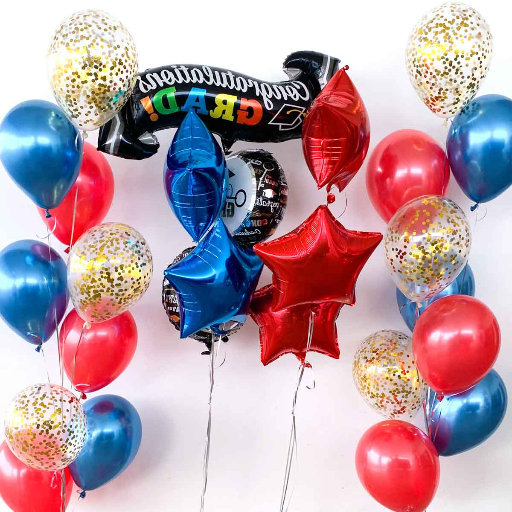
|
Step |
Description |
|---|---|
|
Prepare Latex |
Mix latex with pigments and additives. |
|
Clean Molds |
Wash molds to ensure smooth surfaces. |
|
Apply Coagulant |
Dip molds in coagulant for latex adhesion. |
|
Dip in Latex |
Immerse molds in latex for a thin coating. |
|
Form Mouthpiece |
Roll edges to create a balloon opening. |
|
Leach Excess |
Remove the extra coagulant with a water bath. |
|
Cure Latex |
Heat molds to dry and set latex. |
|
Remove Balloons |
Strip balloons from molds carefully. |
|
Quality Check |
Inspect balloons for defects. |
|
Package |
Pack balloons for storage or sale. |
Choosing the Right Balloon Size and Color
The proper selection of balloon size and color is key to creating visual effects that are pleasing to the eye and balanced. Balloons come in sizes that generally vary from 5 inches to 36 inches, each size intended for a specific role in your decoration. For instance, the smallest, 5-inch balloons, are perfect for little clusters or finer details; however, the 12- to 18-inch balloons can suffice for ample capacity in arches or centerpieces. The larger 24- and 36-inch balloon sizes provide bold statements as giant focal points, or consideration can be given to big installations in significant events.
When it comes to color selection, understanding color harmony and the theme of the occasion is helpful. For an elegant and minimalist occasion, you may opt for monochromatic schemes, complemented by a dynamic color that makes the palette pop. Pastels are currently trending for weddings and baby showers, while bold, metallic hues are frequently used in corporate events and celebrations. A color wheel or free online palette generator helps in selecting a cohesive color scheme that matches the mood you want to set.
Data suggest that approximately 70 percent of event planners prefer biodegradable latex balloons due to their greener standard and the variety of available colors. In comparison, 30 percent tend to opt for metallic foil ones because of their durability and reflective shine. Choose eco-friendly materials whenever possible, so you can still help reduce some harm to the environment while not compromising the physics of your design.
Inflation Techniques: Manual vs. Electric Pumps
|
Parameter |
Manual Pump |
Electric Pump |
|---|---|---|
|
Speed |
Slower, requires manual effort |
Fast, inflates in seconds |
|
Effort |
Requires physical pumping |
Minimal effort, push-button operation |
|
Portability |
Lightweight, easy to carry |
Bulkier, needs a power source |
|
Cost |
Affordable, under $10 |
Higher, $20-$50+ |
|
Capacity |
Suitable for small quantities |
Ideal for large-scale events |
|
Power Source |
None required |
Electricity or batteries are needed |
|
Durability |
Simple, long-lasting |
May require maintenance |
|
Use Case |
Small parties, outdoor use |
Professional, large events |
Sealing and Storing Balloons Properly
Properly sealing and storing balloons help maintain the quality for eventual reuse or display. The five tips outlined below will help you extend the lifespan of your balloons:
- Use Balloon Clips or Ties for Sealing
Balloon clips or special balloon ties provide a good seal against air or helium leakage. Statistical data show that balloons sealed with clips have a lifespan 25% longer than those tied by hand.
- Avoid Over-Inflation
Overinflating balloons stretches the materials too much, causing weaknesses and an eventual pop. Correct inflation is essential for improving life span and maintaining good looks.
- Store Balloons in a Cool, Dry Place
Heat and humidity are unkind to balloon materials, especially latex, causing discoloration and loss of elasticity. Keep the deflated balloons in a plastic bag or container, and away from sunlight.
- Keep Balloons From Getting Punctured
Most premature balloon deflations are caused by getting punctured by sharp objects. Make sure these hazards are not present in your storage space or display areas.
- Handle Balloons Gently
More frequent handling weakens the material and reduces the balloon’s lifespan. Handle gently to avoid stretching or damage.
In adherence to these tricks, you can keep your balloons in prime condition for saving or displaying on long occasions.
Creating Stunning Balloon Garlands
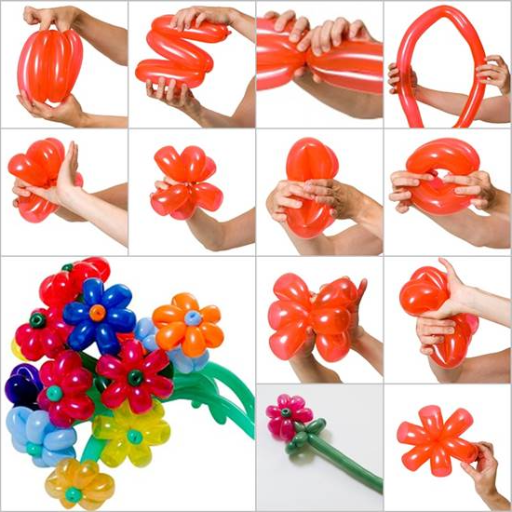
- Choose a Color Scheme
Select colors that complement your theme to achieve a unified look. You can go for different shades for some depth or go completely contrasting to really have a garland that stands out.
- Gather Materials
Balloons of various sizes, a hand pump, string or fishing wire, and balloon tape or strips for garland assembly.
- Inflate Balloons
Inflate balloons to various sizes for added visual appeal. Do not overinflate, as this can cause the tire to pop while assembling.
- Arrange and Attach Balloons
Use balloon tape or string, tying into clusters, alternating sizes for a fuller and dynamic look.
- Install the Garland
Mount the garland with hooks and command strips or create a sturdy frame for it. Adjust as needed to take its desired shape and position.
With these simple steps, you’ll be able to create a fabulous balloon garland for any fun event.
Materials Needed to Make a Balloon Garland
Creating an exquisite balloon garland requires a few general-purpose materials that can be easily found online or purchased at a local party store. Here is an extended inventory of everything that you will be requiring:
- Balloons
Choose latex balloons of assorted sizes (usually ranging from 5 inches to 18 inches) to add depth and dimension to your garland. The number of balloons depends on the size of the garland intended. For example, a 10-foot standard garland requires approximately 100 balloons.
- Balloon Pump
To inflate balloons quickly, use either a hand balloon pump or an electric one. An electric one will save a lot of time with larger projects.
- Balloon Tape (Balloon Decorating Strip)
This strip of plastic features evenly spaced holes to secure the knotted end of the balloons, making the formation of a garland easy.
- Glue Dots or Adhesive Tabs
To apply those smaller balloons and to slip-fill any larger gaps, glue dots can be helpful for a more seamless look.
- Fishing Line or String (Optional)
A fishing line or string can be used to reinforce the stability of the garland during rendering and installation, which will be particularly helpful for large or complex displays.
- Command Hooks or Wall Clips
Use these to hang your balloon garlands safely and securely on walls, doorways, or ceilings without damaging the surface.
- Optional Decorations
For a more professional look, consider incorporating greenery, faux flowers, ribbons, and LED string lights, among other options.
- Scissors
Just like any other tool, this basic cutter is designed for cutting tape, fishing line, or string, which comes in very handy during assembly.
Once you have all the materials on hand, you will have paved your way to a smooth and stress-free assembly process that will swiftly showcase a stunning balloon garland before your guests.
Step-by-Step Instructions for Making a Balloon Garland
|
Step |
Description |
|---|---|
|
Gather Supplies |
Balloons, pump, strip, glue dots, hooks. |
|
Inflate Balloons |
Use varying sizes and colors. |
|
Attach to Strip |
Insert balloon knots into strip holes. |
|
Plan Shape |
Decide on the garland layout and hook placement. |
|
Hang Garland |
Secure the strip to hooks or a structure. |
|
Fill Gaps |
Add small balloons with glue dots. |
|
Add Decorations |
Optional: flowers, ribbons, or greenery. |
Creative Ideas for Balloon Garland Themes
Here are some creative ideas for the balloon garland themes I love:
- Tropical Paradise
It calls for bright greens, yellows, pinks, and blues for a tropical vibe. Wash it down with some palm leaves, either plastic or real, or floral accents for that island feel.
- Pastel Dreams
Think of soft pastel hues of blush, mint, lavender, and sky blue for a dreamy effect. This theme is apt for baby showers and afternoon teas.
- Starry Night
Create a celestial theme with navy blue, black, and gold. Add some star-shaped foil balloons and twinkle lights for a truly magical ambience.
- Rustic Elegance
Combine earth tones, such as beige, rust, and white, with a hint of herbal green. This will be wonderful for both weddings and boho-chic affairs.
- Rainbow Celebration
Balloons of all colors, under the rainbow, make their presence felt in such celebrations, whether birthdays or the Pride Parade. Streamers in matching colors are good!
Each theme provides an opportunity to add a touch of your flair to the garland, making it suitable for a specific occasion or to wow your guests!
Hot Air Balloon Projects for Beginners
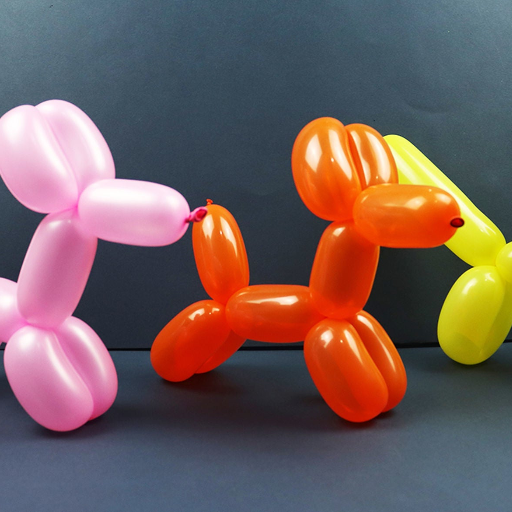
Hot-air balloon crafts are simple, fun, and a rewarding activity for beginners. The materials you need are paper, glue, string, and light fabric. Here are two quick and easy projects:
- Making a Paper Hot Air Balloon
- Cut colorful papers into panels and glue them together to form a balloon shape. Attach a little paper “basket” to it with some string. This is a lovely project for home decorations or even for school assignments.
- Making Fabric Hot Air Balloon Ornaments
- Sew mini balloon shapes with lightweight fabric and stuff them with cotton. Decorate the miniature basket using small containers or craft materials. These ornaments are great for festive or whimsical décor.
Both crafts are easy for beginners, while requiring very minimal crafting skills, making them great for both kids and adults.
Materials Required for Hot Air Balloon Crafts
To create exquisite hot air balloon crafts passionately, you will need these supplies. These are readily obtainable in almost any crafts store or in the most popular online portals, so you are good to bring your ideas to life:
- Balloons – These are craft-shaped balloons. Small round ones should form the body of the hot air balloon. Latex balloons are best for papier mache, while lightweight fabrics are secured around a deflated balloon.
- Lightweight Fabric or Paper – For fabric crafts, use cotton/polyester; for paper crafts, use paper. Brilliant tissue or scrapbook paper in cheerful colors or designs will make a significant contribution.
- Cotton or Polyester Stuffing – The fabric hot air balloon ornaments require stuffing to provide volume and maintain their shape.
- Adhesive Materials – Glue sticks, craft glue, or double-sided tape can be used. When joining heavier components, hot glue is handy but should be applied carefully.
- Decorative String or Ribbon – This is needed either to hang your balloon or to provide lovely design details. Twine also works well with rustic styles.
- Tools-in-Hand Craft – To ensure clean cutting and neat assembly, scissors, needles, thread, and a measuring tape will be required.
- Small Containers or Baskets – Mini baskets can act as the “carriage” at the bottom of the balloon. Use cupcake liners, bottle caps, or other repurposed small containers.
- Painting Supplies- With acrylic paints and fine brushes, customize and detail your hot air balloons. Give your hot air balloons a personal zone.
- Markers, Stickers, or Glitter – Add more uniqueness and flair to your creations by incorporating these elements.
With the above materials, you can create personalized hot air balloon crafts for decorations, gifts, or educational purposes.
Step-by-Step Guide to Making a Hot Air Balloon Model
| Step | Key Point | Details/Parameters |
|---|---|---|
|
1 |
Gather Materials |
Plastic bag, candles, aluminum foil, wire, tape, scissors, lighter |
|
2 |
Prepare the Balloon Envelope |
Use a lightweight plastic bag (e.g., dry cleaner’s bag) |
|
3 |
Create the Frame |
Use straws or wire to form an “X” structure |
|
4 |
Make the Candle Holder |
Shape aluminum foil into a cup to hold candles |
|
5 |
Attach the Frame to the Balloon |
Secure the frame to the bag’s opening with tape |
|
6 |
Secure the Candle Holder |
Attach the foil cup with candles to the frame |
|
7 |
Light the Candles |
Use a lighter to ignite candles, heating the air inside the balloon |
|
8 |
Launch the Balloon |
Hold the bag upright until it fills with hot air, then release |
|
9 |
Safety Precautions |
Ensure adult supervision, avoid flammable materials, and keep a fire extinguisher nearby. |
Tips for Making Your Hot Air Balloon Stand Out
- Choose Vibrant Color Combinations
Your balloon panels must feature bold colors, preferably contrasting shades, for a visually striking appearance. Designs could push teal against orange or purple alongside yellow to create a show-stopper.
- Add Creative Patterns and Designs
Introduce patterns like stripes, polka dots, or triangles. Either paint from pictures or photos through stencils, or go by eye with acrylic colours.
- Use Textures and Layers
Use and mix materials that are textured, such as felt, cloth, or tissue paper, to achieve more lovely expressions and formations. Layering: This can take your balloon look to another level of excitement.
- Personalize with Themes
Design your balloon around a particular theme, such as stars and planets for a celestial design or flowers for a garden type. Customize the general look to suit the occasion or its recipient.
- Incorporate Lights or Glitter Accents
Add sparkles with LED lights or finely controlled glitter; your hot air balloon will shine at night and generate significant interest in your creation.
Common Mistakes to Avoid When Making Balloons
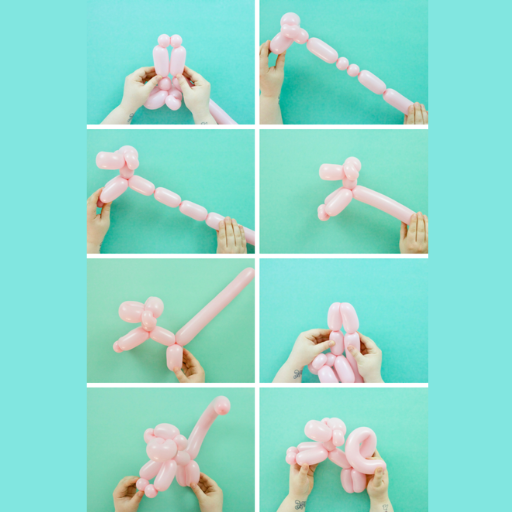
- Too Much Air in the Balloon
When a lot of air migrates into a balloon, it either bursts or loses its intended shape. Inflate slowly and stop when the desired size is reached.
- Using Unqualified Materials
Bad-quality or mismatched materials can significantly compromise the balloon’s strength or design. Make a habit of choosing materials suitable for the project you are working on and its intended purpose.
- Not Double-Checking the Connection
A loose connection can cause instability with ribbons, weights, or decorations. Double-check that everything is held in place.
- Skipping Preparation
Forgetting to make specific design preparations or gathering the necessary tools beforehand can delay or lead to errors. Train yourself to make complete preparations before starting the balloon-making process.
- Environmental Factors Are Ignored
Weather conditions such as heat and sunlight diminish balloon strength. Keep them stored away from heat and sunlight to maintain their quality.
Overinflating vs. Underinflating Balloons
To inflate balloons correctly, the size and pressure must be correct to guarantee durability, aesthetics, and safety. Underinflating and overinflating balloons both have disadvantages. Here are five essential considerations about these issues:
- Risk of Bursting (Overinflation)
Overinflated balloons are likely to pop when filled with air or helium. Overinflation stretches the latex beyond the material’s strength, making it very fragile and prone to popping with even slight external pressure or environmental factors.
- Reduced Flight Time (Underinflation of Helium Balloons)
Underinflated helium balloons may not have sufficient lift to sustain regular floating or at a height. Influencing float time also, in that from helium volume to natural leakage-helium over time, there isn´t enough to weigh against.
- Aesthetics Impairment
A balloon overinflated will lose the aesthetic shape and design with which it was conceived, in most cases appearing distorted or downright ugly. On the other hand, a low-pressure balloon may appear wrinkled, saggy, or too small to the eye, thus spoiling its appearance.
- Material’s Life Span
These balloons will be able to survive for a very short amount of time due to constant tension on the material. Underinflated balloons may be slightly longer in duration since the material is not stressed, but they fail to achieve the full size and visual impact.
- Safety Hazards
Overinflated balloons pop suddenly and can injure a person or at least startle those nearby. By properly inflating balloons according to their intended size, this danger will be significantly lessened.
By maintaining inflation levels as specified on the balloon, you can maximize the balloon’s performance and visual appeal while at least avoiding most common problems. Always follow the manufacturer’s recommendations for optimal results.
Using the Wrong Materials for Your Project
Choosing the wrong materials for your project can result in wasted time, increased costs, and compromised results. Therefore, always research and select tools and supplies that are most suitable for the specific requirements of your project.
Neglecting Safety Precautions
Unwillingness to adhere to safety protocols can lead to slips and falls, injuries, mutilations, and even loss of life. Every worker must be familiar with proper safety procedures to ensure their safety and the safety of others involved in the project. Safety violations range from minor injuries to significant health risks and substantial financial losses. The following five safety suggestions should always be followed:
- Putting on Protective Equipment
Protective equipment must be worn at all times. It may include gloves, safety goggles, helmets, or masks, depending on the project being undertaken. It reduces the risk of injuries from tools, chemicals, or flying debris.
- Ensuring Ventilation
Proper ventilation must be ensured when working with paint, adhesive, or any material that may generate toxic fumes. Opening windows and turning on exhaust fans can be effective ways to provide ventilation if there is any doubt.
- Checking for Faults in Tools and Equipment
Before using any tools or machinery, always check for damage and defects to avoid potential hazards.
- Observing Electrical Safety
Do not overload power outlets. Keep electrical cords away from any form of water. Unplug electrical tools when not in use. Failure to follow proper electrical safety precautions may lead to a fire outbreak and electrocution.
- Keep Emergency Equipment within Easy Reach
Having emergency equipment is vital. So keep a first-aid box, fire extinguisher, and emergency numbers close at hand.
References
-
Strengthening Balloon Programs: University and Business Collaborations, Research, Outreach, and Internal Support
This paper discusses the development and quality improvement of balloon programs, with an emphasis on research and collaboration.
Read the paper here -
The Eclipse Ballooning Project at Vanderbilt University
This project showcases the development of custom equipment for ballooning, offering insights into the technical and academic aspects of balloon design and construction.
Access the full document here -
Hot Air Balloon Navigation
This academic work examines the design and navigation of hot air balloons, concentrating on the engineering and scientific principles that underpin their functionality.
View the study here
Frequently Asked Questions (FAQ)
How to DIY Balloon Decorations?
To create DIY balloon decorations, gather all the necessary items to make your balloons. You can use a balloon pump to inflate your balloons easily. Consider using balloon garland kits for a stunning display, which often come with a variety of colors and sizes. Once inflated, tie the end of the balloon securely to prevent it from deflating.
What is the Best Way to Inflate a Balloon?
The best way to inflate a balloon depends on the size and type of balloon you’re using. For smaller balloons, you can blow them up with your breath. However, for larger or longer balloons, using a balloon pump is more effective. This method ensures you can inflate the balloon quickly and without straining yourself.
How to Tie a Knot in a Balloon?
Tying a knot in a balloon is a simple task. After inflating the balloon, hold the neck of the balloon with one hand while using your other hand to make a loop. Pull the end through the loop and then pull tight to secure it. This knot will prevent air from escaping and help maintain the longevity of your balloon.
Can I Make a Balloon Garland from Scratch?
Yes, you can make a balloon garland from scratch! Start by inflating your balloons and using a plastic strip or tape to attach them. You can create segments of different colors and sizes to give your garland a vibrant look. Hanging the garland in your desired location will add a festive touch to any occasion.
What Materials Are Needed for Balloon Sculptures?
To create balloon sculptures, you will need long balloons, a balloon pump, and possibly glue or tape for additional support. It’s beneficial to watch video tutorials that guide you through the process of twisting and folding the balloons into the desired shapes, such as animals or characters.
How Do I Make Smaller Balloons?
To make smaller balloons, you can inflate the balloon to a lesser capacity than usual. Once inflated, tie it off as you usually would. Alternatively, if you are looking to create smaller segments, you can cut a longer balloon into smaller pieces before inflating them individually.
What Are the Tips for Balloon Decoration on a Budget?
To decorate with balloons affordably, consider using budget-friendly balloon kits that provide a variety of colors and sizes. You can also use DIY methods, such as creating balloon garlands or hanging decorations from plastic strips. Reusing balloons from previous events can also save money while still achieving a colorful look.
How to Attach Balloons to Surfaces?
To attach balloons to surfaces, you can use tape, glue dots, or small holes made for hanging. If you’re making a balloon garland, the plastic strip can also serve as a base to hold the balloons in place. Ensure you choose an adhesive that won’t damage the surfaces to which you’re attaching the balloons.
Where Can I Find Balloon Decoration Tutorials?
You can find balloon decoration tutorials on various platforms, including YouTube and Instagram. These video tutorials often provide step-by-step guidance on creating various balloon arrangements, including garlands and sculptures. Joining forums dedicated to balloon art can also offer valuable tips and tricks from experts.

